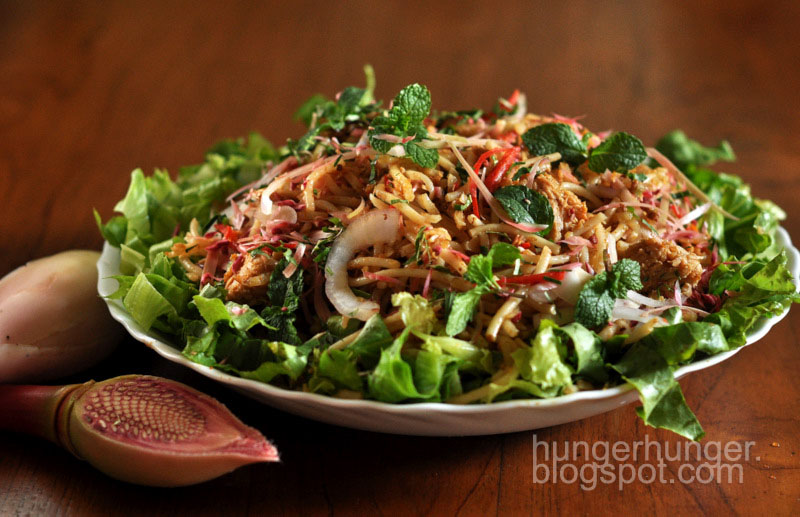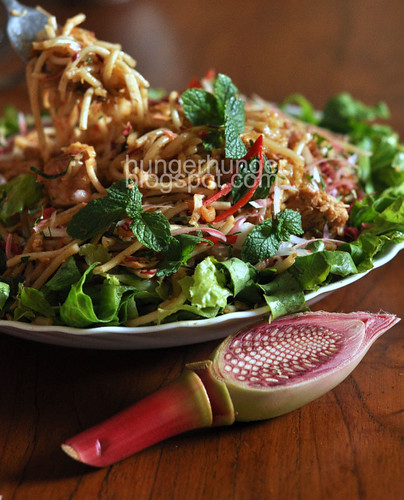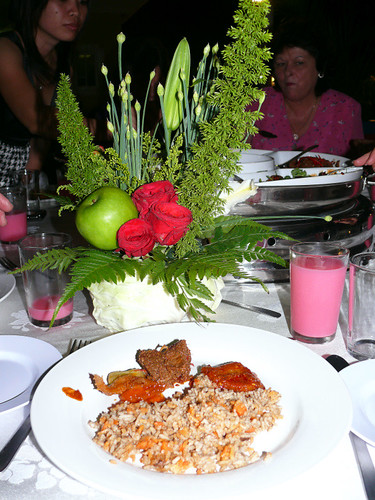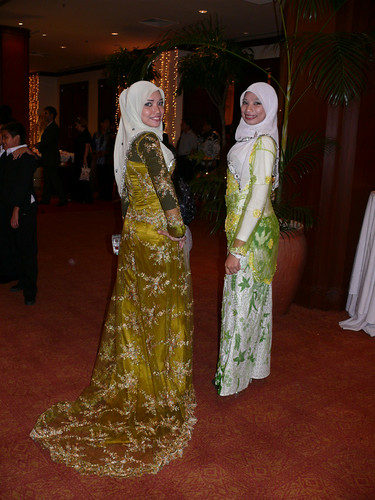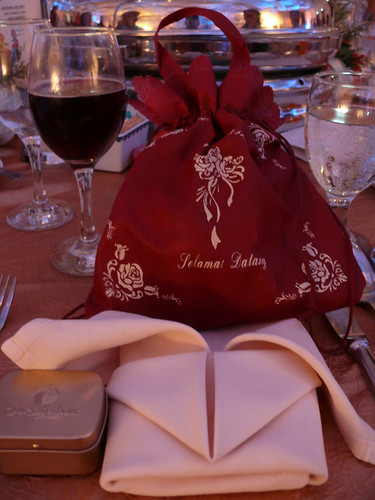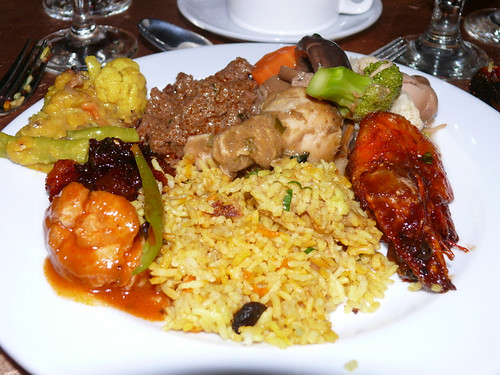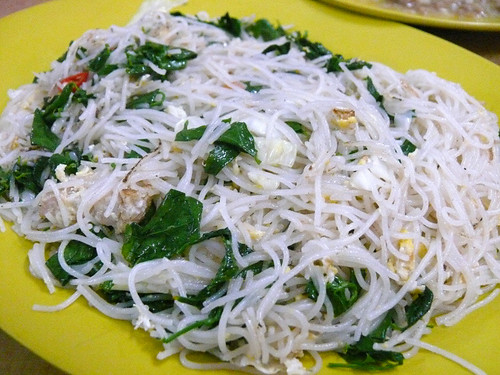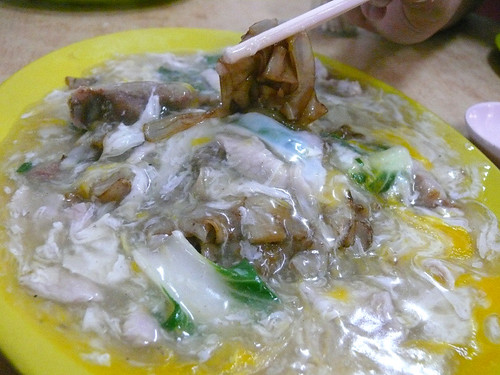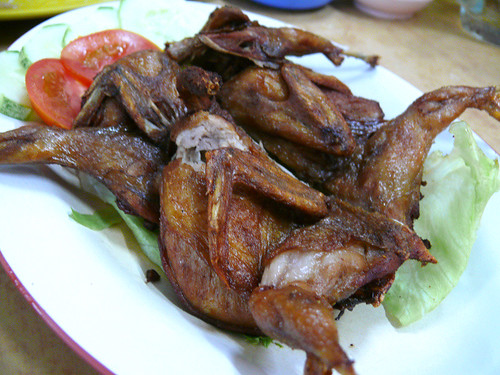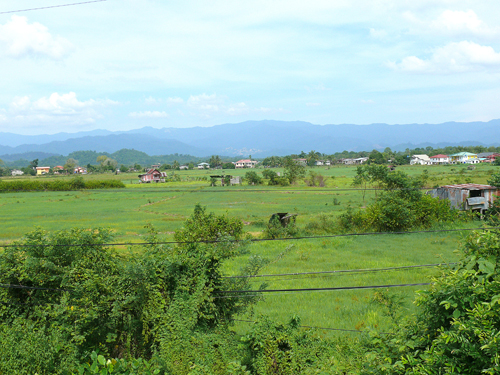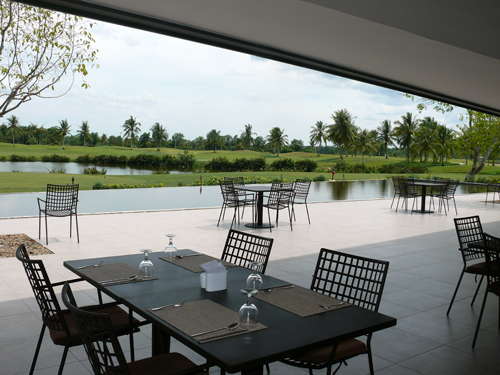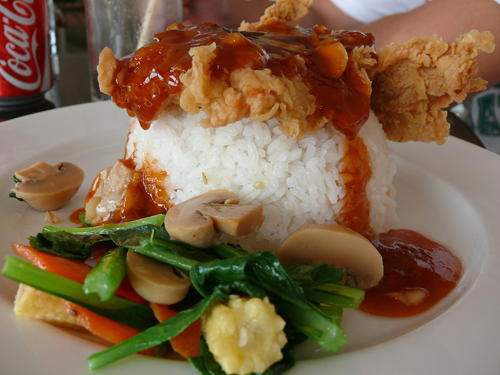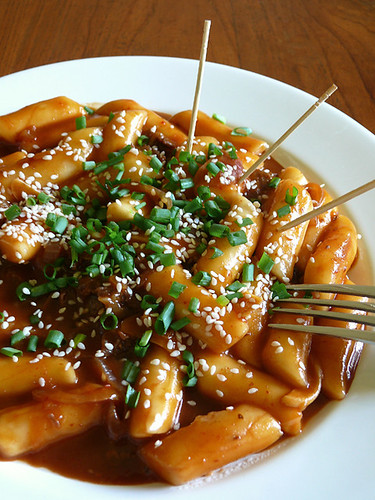
Bak choy soup
The last batch of dried bak choy I bought from a Chinese herbal shop was so tough we couldn't chew on the veg even after 3 hours of boiling, so I decided to dry my own bak choy. I was surprised to find that the bak choy took about 10 days to dry completely. Another surprise was the that the bak choy shrank by as much as 10 times in volume. The color of the leaves were light brown, unlike the commercial ones which are almost black in color. I think the darker the color, the older the veg and that's why 3 hours of boiling didn't soften it.
Ming is a soup king. He is happy as long as he gets soup, and it doesn't matter if it's a quick soup to help wash his food down and rehydrate his system or a soup that's simmered for 3 hours to nourish his body, as long as it's a Chinese soup. Wey, on the other hand, is the only one in the family who doesn't drink Chinese soups so I have to stock up on Campbell's soups for him. Ming is very lucky that his "Australian mom" takes the trouble to cook Chinese soups just for him.
Friends who have migrated to western countries always tell me they can't make certain soup s because they can't get village chickens and regular chicken bones have an awful chicken flavor. Pork bones are the worst, smelling like what my mom said is pig pee which of course is not true but it comes close, I imagine. I think the piggy stink is because of the breed (and some say gender) and westerners expect their pork piggy so they don't mind it whereas in serious pork-eating countries (like China and anywhere you find Chinese), they rear pigs that don't have that piggy stink. If you can't get good pork or pork bones, use stewing beef or bones although traditionally this soup is made with pork. Add a small slice of ginger if using beef.
I've recently switched from using pork bones for my soup base to a cut of pork called yau moi dai in Hakka, meaning 'waist belt'. It is a piece of long lean meat covered with a thick membrane-like skin, and I'm told it is attached to the top of the tenderloin. Yau moi dai should not be cut it into small pieces; just boil it whole and cut after it's done. It will taste sweeter. The soup made with yau moi dai is just as sweet as pork bones soup with the advantage of being not oily. I've noticed that some people, especially Malaysians, add dried squid to all their simmered soups. That is so wrong. Not all traditional Chinese soups call for dried squid. In fact, sometimes the flavor of the dried squid overwhelms certain soups. Dried bak choy soup and watercress soup are two soups I can think of that don't need dried squid or dried oysters.
Dried bak choy soup is one of those old traditional favorites, cooked by moms when their families need something to cool their bodies. Many Chinese believe in heaty and cooling food--the Ying and Yang thing. Foods are heaty or cooling depending on the way they are cooked and on their intrinsic properties. Durians for example are very heaty fruits while mangosteens are cooling, and so it's best to eat both to balance the yingyang scale. Fried, roasted and bbqed food are heaty while boiled and steamed food are not. Some people are very sensitive to the heaty-cooling thing but I find it telling that our family doesn't bother much with it and so we don't suffer from heatiness or exteme coolness. It's like ghosts; the more you believe in them the more you'll see them. We have a friend who sees them everywhere and I can tell you it's very unnerving when he starts telling you who or what is in the room.
The bak choy shrank so much that I had to add fresh bak choy to the soup, but that combination makes a very refreshing soup. You can use wholly dried bak choy or add some fresh bak choy like I did. I will continue to dry my own bak choy from now on because other than the better texture and tastier soup it makes, and the fact that my choy is organic, home-dried bak choy has none of the slight sourness that commercial dried bak choy sometimes give. There's so much fiber in this soup, you'll feel very detoxed the next day.
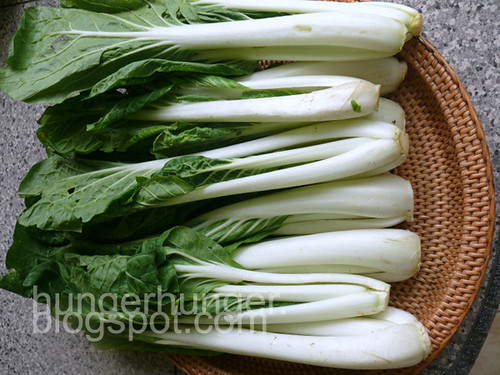
Fresh bak choy. To make your own, get the long-stemmed bak choy, wash well and hang them on a line to dry. When wilted, you can put on a metal tray or bamboo tray to dry. Dry it in hot sun until it is like straw.
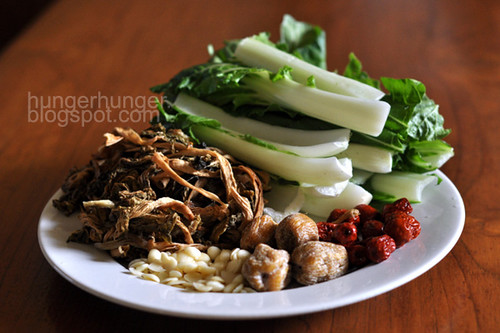
The ingredients for bak choy soup--I used 3 x as much fresh choy than shown in the photo. This is the amount of dried bak choy I got from the fresh choy in the previous photo.
Dried Bak Choy Soup (for 8-10 servings)
700-800 kg pork meat or 1 kg pork bones, or mixture of
a handful of dried bak choy (say 1 cup, compacted), soaked, washed n cut into 6 cm lengths
300-400g fresh bak choy, cut into 6-8 cm lengths
1 small handful red dates, washed
4-5 honey dates, preferably the sugar-free ones (if unavailable, substitute with ordinary dates)
2 T Chinese apricot kernels (for soups), washed
salt to taste, if using
1. Clean the pork meat or bones, then blanch them with boiling water and drain.
2. Put the meat/bones into a large pot and add enough water to give about 8 cm clearance from the ingredients to the water level. Add the red dates, honey dates, almonds and dried bak choy and let soup simmer 1 hour.
3. Add the fresh bak choy, season with salt lightly and simmer another hour (I don't believe in simmering for longer than 2-2 1/2 hours, unlike my MIL who simmers her soups for 3-4 hours). Do not add more water unless the water level is very low. Serve hot.
The last batch of dried bak choy I bought from a Chinese herbal shop was so tough we couldn't chew on the veg even after 3 hours of boiling, so I decided to dry my own bak choy. I was surprised to find that the bak choy took about 10 days to dry completely. Another surprise was the that the bak choy shrank by as much as 10 times in volume. The color of the leaves were light brown, unlike the commercial ones which are almost black in color. I think the darker the color, the older the veg and that's why 3 hours of boiling didn't soften it.
Ming is a soup king. He is happy as long as he gets soup, and it doesn't matter if it's a quick soup to help wash his food down and rehydrate his system or a soup that's simmered for 3 hours to nourish his body, as long as it's a Chinese soup. Wey, on the other hand, is the only one in the family who doesn't drink Chinese soups so I have to stock up on Campbell's soups for him. Ming is very lucky that his "Australian mom" takes the trouble to cook Chinese soups just for him.
Friends who have migrated to western countries always tell me they can't make certain soup s because they can't get village chickens and regular chicken bones have an awful chicken flavor. Pork bones are the worst, smelling like what my mom said is pig pee which of course is not true but it comes close, I imagine. I think the piggy stink is because of the breed (and some say gender) and westerners expect their pork piggy so they don't mind it whereas in serious pork-eating countries (like China and anywhere you find Chinese), they rear pigs that don't have that piggy stink. If you can't get good pork or pork bones, use stewing beef or bones although traditionally this soup is made with pork. Add a small slice of ginger if using beef.
I've recently switched from using pork bones for my soup base to a cut of pork called yau moi dai in Hakka, meaning 'waist belt'. It is a piece of long lean meat covered with a thick membrane-like skin, and I'm told it is attached to the top of the tenderloin. Yau moi dai should not be cut it into small pieces; just boil it whole and cut after it's done. It will taste sweeter. The soup made with yau moi dai is just as sweet as pork bones soup with the advantage of being not oily. I've noticed that some people, especially Malaysians, add dried squid to all their simmered soups. That is so wrong. Not all traditional Chinese soups call for dried squid. In fact, sometimes the flavor of the dried squid overwhelms certain soups. Dried bak choy soup and watercress soup are two soups I can think of that don't need dried squid or dried oysters.
Dried bak choy soup is one of those old traditional favorites, cooked by moms when their families need something to cool their bodies. Many Chinese believe in heaty and cooling food--the Ying and Yang thing. Foods are heaty or cooling depending on the way they are cooked and on their intrinsic properties. Durians for example are very heaty fruits while mangosteens are cooling, and so it's best to eat both to balance the yingyang scale. Fried, roasted and bbqed food are heaty while boiled and steamed food are not. Some people are very sensitive to the heaty-cooling thing but I find it telling that our family doesn't bother much with it and so we don't suffer from heatiness or exteme coolness. It's like ghosts; the more you believe in them the more you'll see them. We have a friend who sees them everywhere and I can tell you it's very unnerving when he starts telling you who or what is in the room.
The bak choy shrank so much that I had to add fresh bak choy to the soup, but that combination makes a very refreshing soup. You can use wholly dried bak choy or add some fresh bak choy like I did. I will continue to dry my own bak choy from now on because other than the better texture and tastier soup it makes, and the fact that my choy is organic, home-dried bak choy has none of the slight sourness that commercial dried bak choy sometimes give. There's so much fiber in this soup, you'll feel very detoxed the next day.

Fresh bak choy. To make your own, get the long-stemmed bak choy, wash well and hang them on a line to dry. When wilted, you can put on a metal tray or bamboo tray to dry. Dry it in hot sun until it is like straw.

The ingredients for bak choy soup--I used 3 x as much fresh choy than shown in the photo. This is the amount of dried bak choy I got from the fresh choy in the previous photo.
Dried Bak Choy Soup (for 8-10 servings)
700-800 kg pork meat or 1 kg pork bones, or mixture of
a handful of dried bak choy (say 1 cup, compacted), soaked, washed n cut into 6 cm lengths
300-400g fresh bak choy, cut into 6-8 cm lengths
1 small handful red dates, washed
4-5 honey dates, preferably the sugar-free ones (if unavailable, substitute with ordinary dates)
2 T Chinese apricot kernels (for soups), washed
salt to taste, if using
1. Clean the pork meat or bones, then blanch them with boiling water and drain.
2. Put the meat/bones into a large pot and add enough water to give about 8 cm clearance from the ingredients to the water level. Add the red dates, honey dates, almonds and dried bak choy and let soup simmer 1 hour.
3. Add the fresh bak choy, season with salt lightly and simmer another hour (I don't believe in simmering for longer than 2-2 1/2 hours, unlike my MIL who simmers her soups for 3-4 hours). Do not add more water unless the water level is very low. Serve hot.



